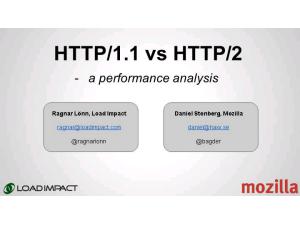- 本月热门
-
 DesignInTec:科技里的设计(当设计师参与创业) by 前田约翰
DesignInTec:科技里的设计(当设计师参与创业) by 前田约翰 -
 Go语言内存、垃圾回收、协程简介(1.4 runtime 运行环境) by 雨痕
Go语言内存、垃圾回收、协程简介(1.4 runtime 运行环境) by 雨痕 -
 AngularJS the performance parts(AngularJS性能:过去现在和未来) by toddmotto
AngularJS the performance parts(AngularJS性能:过去现在和未来) by toddmotto -
 HTTP1.1 vs HTTP2 a performance analysis(HTTP2比HTTP1性能提高66%) by mozilla
HTTP1.1 vs HTTP2 a performance analysis(HTTP2比HTTP1性能提高66%) by mozilla -
 写作即编程(Markdown标记语言简介及使用教程) by 黄增光
写作即编程(Markdown标记语言简介及使用教程) by 黄增光 -
 How To Shot Web(如何攻破网站) by Jason Haddix
How To Shot Web(如何攻破网站) by Jason Haddix -
 How to build a content and social media engine[如何构建内容和社交媒体营销引擎] by by Marcel Santilli
How to build a content and social media engine[如何构建内容和社交媒体营销引擎] by by Marcel Santilli -
 9 Thought-Provoking Quotes About Work-Life Balance(9个发人深省的关于工作生活平衡的名言) by SalesForce
9 Thought-Provoking Quotes About Work-Life Balance(9个发人深省的关于工作生活平衡的名言) by SalesForce -
 MongoDB and the Internet of Things(MongoDB和物联网) by Chris Biow
MongoDB and the Internet of Things(MongoDB和物联网) by Chris Biow -
 高性能Web应用缓存架构设计浅谈 by Robbin Fan
高性能Web应用缓存架构设计浅谈 by Robbin Fan
加收藏
NGINX High-performance Caching Andrew(高性能缓存-页面加载时间过长会有什么后果) by Alexeev@Nginx
第1页
NGINX High-performance Caching
Introduced by Andrew Alexeev
Presented by Owen Garrett
Nginx, Inc.
Presented by Owen Garrett
Nginx, Inc.
第2页
About this webinar
Content Caching is one of the most effective ways to dramatically improve the performance of a web site. In this webinar, we’ll deep-dive into NGINX’s caching abilities and investigate the architecture used, debugging techniques and advanced configuration. By the end of the webinar, you’ll be well equipped to configure NGINX to cache content exactly as you need.
Content Caching is one of the most effective ways to dramatically improve the performance of a web site. In this webinar, we’ll deep-dive into NGINX’s caching abilities and investigate the architecture used, debugging techniques and advanced configuration. By the end of the webinar, you’ll be well equipped to configure NGINX to cache content exactly as you need.
第3页
Basic principles of content caching
第4页
Basic Principles
Internet
GET /index.html
GET /index.html
Used by: Browser Cache, Content Delivery Network and/or Reverse Proxy Cache
Why cache – three reasons – performance improvements, capacity improvements, and resilience to failures in backends
第5页
Mechanics of HTTP Caching
Origin server declares cacheability of content
Requesting client honors cacheability
May issue conditional GETs
Requesting client honors cacheability
May issue conditional GETs
Expires: Tue, 6 May 2014 02:28:12 GMT
Cache-Control: public, max-age=60
X-Accel-Expires: 30
Last-Modified: Tue, 29 April 2014 02:28:12 GMT
ETag: "3e86-410-3596fbbc“
Cache-Control: public, max-age=60
X-Accel-Expires: 30
Last-Modified: Tue, 29 April 2014 02:28:12 GMT
ETag: "3e86-410-3596fbbc“
第6页
What does NGINX cache?
Cache GET and HEAD with no Set-Cookie response
Uniqueness defined by raw URL or:
Cache time defined by
X-Accel-Expires
Cache-Control
Expireshttp://www.w3.org/Protocols/rfc2616/rfc2616-sec13.html
Uniqueness defined by raw URL or:
Cache time defined by
X-Accel-Expires
Cache-Control
Expireshttp://www.w3.org/Protocols/rfc2616/rfc2616-sec13.html
proxy_cache_key $scheme$proxy_host$uri$is_args$args;
第7页
Nginx in operation…
Cool because is trivial to configure
第8页
NGINX Config
proxy_cache_path /tmp/cache keys_zone=one:10m levels=1:2 inactive=60m;
server {
listen 80;
server_name localhost;
location / {
proxy_pass http://localhost:8080;
proxy_cache one;
}
}
server {
listen 80;
server_name localhost;
location / {
proxy_pass http://localhost:8080;
proxy_cache one;
}
}
第9页
Caching Process
Internet
Check Cache
Respond from cache
Read request
Wait?
cache_lock_timeout
cache_lock_timeout
Response cacheable?
Stream to disk
proxy_cache_use_stale error | timeout | invalid_header |
updating | http_500 | http_502 | http_503 | http_504 |
http_403 | http_404 | off
updating | http_500 | http_502 | http_503 | http_504 |
http_403 | http_404 | off
NGINX can use stale content under the following circumstances:
MISS
HIT
Error: an error occurred while establishing a connection with the server, passing a request to it, or reading the response header;
Timeout: a timeout has occurred while establishing a connection with the server, passing a request to it, or reading the response header;
invalid_header: a server returned an empty or invalid response;
Updating – content is being refreshed and a lock is in place
http_500: a server returned a response with the code 500;
http_502: a server returned a response with the code 502;
http_503: a server returned a response with the code 503;
http_504: a server returned a response with the code 504;
http_403: a server returned a response with the code 403;
http_404: a server returned a response with the code 404;
Off: disables passing a request to the next server.
第10页
Caching is not just for HTTP
FastCGI
Functions much like HTTP
Memcache
Retrieve content from memcached server (must be prepopulated)
uwsgi and SCGI
Functions much like HTTP
Memcache
Retrieve content from memcached server (must be prepopulated)
uwsgi and SCGI
第11页
How to understand What’s going on
Complex. We make it really easy
第12页
add_header X-Cache-Status $upstream_cache_status;
Cache Instrumentation
第13页
Cache Instrumentation
map $remote_addr $cache_status {
127.0.0.1 $upstream_cache_status;
default “”;
}
server {
location / {
proxy_pass http://localhost:8002;
proxy_cache one;
add_header X-Cache-Status $cache_status;
}
}
127.0.0.1 $upstream_cache_status;
default “”;
}
server {
location / {
proxy_pass http://localhost:8002;
proxy_cache one;
add_header X-Cache-Status $cache_status;
}
}
第14页
Extended Status
Check out: demo.nginx.com
http://demo.nginx.com/status.html
http://demo.nginx.com/status
第15页
How content caching functions in NGINX
It uses same tech as static content that nginx is renowned for
第16页
How it works...
NGINX uses a persistent disk-based cache
OS Page Cache keeps content in memory, with hints from NGINX processes
We’ll look at:
How is content stored in the cache?
How is the cache loaded at startup?
Pruning the cache over time
Purging content manually from the cache
OS Page Cache keeps content in memory, with hints from NGINX processes
We’ll look at:
How is content stored in the cache?
How is the cache loaded at startup?
Pruning the cache over time
Purging content manually from the cache
第17页
How is cached content stored?
Define cache key:
Get the content into the cache, then check the md5
Verify it’s there:
$ echo -n "httplocalhost:8002/time.php" | md5sum
6d91b1ec887b7965d6a926cff19379b4 -
6d91b1ec887b7965d6a926cff19379b4 -
$ cat /tmp/cache/4/9b/6d91b1ec887b7965d6a926cff19379b4
proxy_cache_path /tmp/cache keys_zone=one:10m levels=1:2 max_size=40m;
proxy_cache_key $scheme$proxy_host$uri$is_args$args;
第18页
Loading cache from disk
Cache metadata stored in shared memory segment
Populated at startup from cache by cache loader
Loads files in blocks of 100
Takes no longer than 200ms
Pauses for 50ms, then repeats
Populated at startup from cache by cache loader
Loads files in blocks of 100
Takes no longer than 200ms
Pauses for 50ms, then repeats
proxy_cache_path path keys_zone=name:size
[loader_files=number] [loader_threshold=time] [loader_sleep=time];
(100) (200ms) (50ms)
[loader_files=number] [loader_threshold=time] [loader_sleep=time];
(100) (200ms) (50ms)
第19页
Managing the disk cache
Cache Manager runs periodically, purging files that were inactive irrespective of cache time, deleteing files in LRU style if cache is too big
Remove files that have not been used within 10m
Remove files if cache size exceeds max_size
Remove files that have not been used within 10m
Remove files if cache size exceeds max_size
proxy_cache_path path keys_zone=name:size
[inactive=time] [max_size=size];
(10m)
[inactive=time] [max_size=size];
(10m)
第20页
Purging content from disk
Find it and delete it
Relatively easy if you know the key
NGINX Plus – cache purge capability
Relatively easy if you know the key
NGINX Plus – cache purge capability
$ curl -X PURGE -D – "http://localhost:8001/*"
HTTP/1.1 204 No Content
Server: nginx/1.5.12
Date: Sat, 03 May 2014 16:33:04 GMT
Connection: keep-alive
X-Cache-Key: httplocalhost:8002/*
HTTP/1.1 204 No Content
Server: nginx/1.5.12
Date: Sat, 03 May 2014 16:33:04 GMT
Connection: keep-alive
X-Cache-Key: httplocalhost:8002/*
第21页
Controlling Caching
Get smart
第22页
Delayed caching
Saves on disk writes for very cool caches
Saves on upstream bandwidth and disk writes
proxy_cache_min_uses number;
proxy_cache_revalidate on;
Cache revalidation
第23页
Control over cache time
Priority is:
X-Accel-Expires
Cache-Control
Expires
proxy_cache_valid
proxy_cache_valid 200 302 10m;
proxy_cache_valid 404 1m;
proxy_cache_valid 404 1m;
Set-Cookie response header means no caching
第24页
Cache / don’t cache
Bypass the cache – go to origin; may cache result
No_Cache – if we go to origin, don’t cache result
Typically used with a complex cache key, and only if the origin does not sent appropriate cache-control reponses
proxy_cache_bypass string ...;
proxy_no_cache string ...;
proxy_no_cache string ...;
proxy_no_cache $cookie_nocache $arg_nocache $http_authorization;
第25页
Multiple Caches
Different cache policies for different tenants
Pin caches to specific disks
Temp-file considerations – put on same disk!:
proxy_cache_path /tmp/cache1 keys_zone=one:10m levels=1:2 inactive=60s;
proxy_cache_path /tmp/cache2 keys_zone=two:2m levels=1:2 inactive=20s;
proxy_cache_path /tmp/cache2 keys_zone=two:2m levels=1:2 inactive=20s;
proxy_temp_path path [level1 [level2 [level3]]];
第26页
Gotchas with NGINX caching
No ‘Vary’ support – use cache key
ETags works with Last-Modified, but not alone
Supports SSI, but not ESI
Other than that, you’re good to go!
ETags works with Last-Modified, but not alone
Supports SSI, but not ESI
Other than that, you’re good to go!
第27页
Quick review – why cache?
第28页
Why is page speed important?
We used to talk about the ‘N second rule’:
10-second rule
(Jakob Nielsen, March 1997)
8-second rule
(Zona Research, June 2001)
4-second rule
(Jupiter Research, June 2006)
3-second rule
(PhocusWright, March 2010)
10-second rule
(Jakob Nielsen, March 1997)
8-second rule
(Zona Research, June 2001)
4-second rule
(Jupiter Research, June 2006)
3-second rule
(PhocusWright, March 2010)
第29页
Google changed the rules
“We want you to be able to get from one page to another as quickly as you turn the page on a book”
Urs Hölzle, Google
第30页
The costs of poor performance
Google: search enhancements cost 0.5s page load
Ad CTR dropped 20%
Amazon: Artificially increased page load by 100ms
Customer revenue dropped 1%
Walmart, Yahoo, Shopzilla, Edmunds, Mozilla…
All reported similar effects on revenue
Google Pagerank – Page Speed affects Page Rank
Time to First Byte is what appears to count
Ad CTR dropped 20%
Amazon: Artificially increased page load by 100ms
Customer revenue dropped 1%
Walmart, Yahoo, Shopzilla, Edmunds, Mozilla…
All reported similar effects on revenue
Google Pagerank – Page Speed affects Page Rank
Time to First Byte is what appears to count
http://www.strangeloopnetworks.com/assets/images/infographic2.jpg
http://www.thinkwithgoogle.com/articles/the-google-gospel-of-speed-urs-hoelzle.html
http://moz.com/blog/how-website-speed-actually-impacts-search-ranking
What does performance really mean to you?
Revenue
Ad CTR
Employee and partner satisfaction
What devices do your users use?
What network conditions are they under?
第31页
NGINX Caching lets you
Improve end-user performance
Consolidate and simplify your web infrastructure
Increase server capacity
Insulate yourself from server failures
Consolidate and simplify your web infrastructure
Increase server capacity
Insulate yourself from server failures
1. Deliver all content at the speed of nginx
2. Compared to multiple point solutions
3. Cache for one second example
4. proxy_cache_use_stale
第32页
Closing thoughts
38% of the world’s busiest websites use NGINX
Check out the blogs on nginx.com
Future webinars: nginx.com/webinars
Try NGINX F/OSS (nginx.org) or NGINX Plus (nginx.com)
Check out the blogs on nginx.com
Future webinars: nginx.com/webinars
Try NGINX F/OSS (nginx.org) or NGINX Plus (nginx.com)
